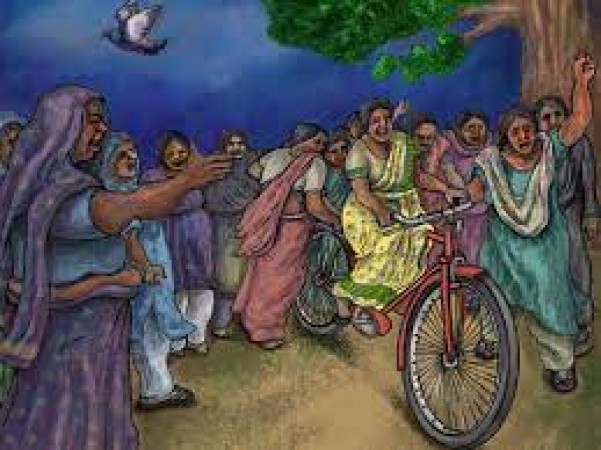
The Indian Women's Movement has played a significant role in shaping the status and rights of women in India. From the early 19th century to the present day, women in India have fought against social, cultural, and political inequalities. This article explores the history of the Indian Women's Movement, highlighting key milestones and influential figures who have made significant contributions to women's empowerment.
1. Early Women's Activism in India:-
1.1 The Bengal Renaissance: During the Bengal Renaissance in the 19th century, enlightened thinkers like Raja Ram Mohan Roy and Ishwar Chandra Vidyasagar advocated for women's rights. They campaigned against practices such as child marriage, sati (the immolation of widows), and purdah (the seclusion of women).
1.2 Reform Movements and Women's Education
The 19th century witnessed the rise of reform movements led by social activists like Pandita Ramabai and Savitribai Phule. They emphasized the importance of women's education and established schools for girls. These efforts laid the foundation for future women's empowerment movements.
2. Women's Organizations and the Fight for Suffrage
2.1 Formation of Women's Associations
In the early 20th century, women's associations began to emerge, advocating for women's rights and social reforms. The Women's Indian Association, founded by Annie Besant, and the All India Women's Conference, led by Sarojini Naidu, were instrumental in addressing issues such as women's education, child marriage, and widow remarriage.
Participation in the Indian National Movement
Indian women actively participated in the struggle for independence alongside male leaders. Prominent figures like Kamala Nehru, Kasturba Gandhi, and Aruna Asaf Ali played vital roles in mobilizing women and shaping public opinion.
2.3 Push for Women's Suffrage
During the pre-Independence era, women's suffrage movements gained momentum. The demand for women's right to vote became a prominent aspect of the Indian Women's Movement. In 1937, after years of advocacy, women were granted limited voting rights.
3. Social Reforms and Women's Rights
3.1 Abolition of Sati
The abolition of sati was a significant achievement of the Indian Women's Movement. Raja Ram Mohan Roy's relentless efforts led to the banning of this practice in 1829. This marked a crucial turning point in the fight against gender-based violence and discrimination.
3.2 Widow Remarriage and Women's Education
Reformers like Ishwar Chandra Vidyasagar campaigned for widow remarriage and women's education. Their progressive ideas challenged societal norms and paved the way for women's liberation from oppressive customs.
4. Women's Role in the Independence Movement
4.1 Women in Nonviolent Protests: Women actively participated in nonviolent protests during the freedom struggle. The Salt March led by Mahatma Gandhi saw the involvement of numerous women who marched alongside men, highlighting their commitment to India's independence.
4.2 Leading Women Freedom Fighters: Many women played pivotal roles in the independence movement. Notable figures include Sarojini Naidu, Vijaya Lakshmi Pandit, and Captain Lakshmi Sehgal. Their contributions ranged from organizing rallies to providing support and leadership.
5. Post-Independence Era: Women's Empowerment and Challenges:-
5.1 Constitutional Provisions for Gender Equality: The Indian Constitution, adopted in 1950, provided a framework for gender equality. Provisions such as equal rights, non-discrimination, and affirmative action aimed to uplift women and bridge the gender gap in various spheres of life.
5.2 Women's Organizations and Advocacy: Post-independence, women's organizations continued to work towards women's rights and empowerment. Organizations like the National Federation of Indian Women and the Self-Employed Women's Association (SEWA) have been at the forefront of advocating for women's issues.
5.3 Gender-Based Violence and Discrimination: Despite progress, India continues to face challenges regarding gender-based violence and discrimination. Issues like dowry-related violence, female infanticide, and unequal access to education and healthcare highlight the ongoing struggles faced by women.
6. Contemporary Women's Movements in India:-
6.1 Feminism and Intersectionality: Contemporary women's movements in India have embraced intersectional feminism, recognizing the intersecting forms of discrimination faced by women based on their caste, class, religion, and sexuality. These movements strive for inclusive social change and challenge deeply-rooted patriarchal structures.
6.2 The #MeToo Movement in India: The #MeToo movement, which gained momentum in India in 2018, shed light on the prevalence of sexual harassment and assault. Women from various sectors came forward with their stories, igniting a nationwide conversation on consent, accountability, and the need for a safer society.
7. Conclusion: The Indian Women's Movement has a rich history of resilience, determination, and progress. From the early pioneers of social reform to the contemporary activists fighting for gender justice, Indian women have continuously challenged norms, shattered stereotypes, and fought for their rights. While significant strides have been made, there is still work to be done to achieve true gender equality in all spheres of Indian society.
Samsung Galaxy Note 8: Unleashing the Power of Innovation and Productivity
Samsung Galaxy: Exploring the Latest Innovations in Smartphone Technology
Google Maps: Redefining Navigation and Beyond with Innovative Features and Unmatched Convenience